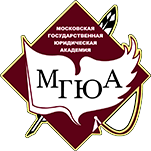Методологический подход к определению роли церкви в государстве
A Methodological Approach to the Role of the Church in the State
Опубликовано в номере 2 за 2022 год
DOI: 10.17803/2542-2472.2022.22.2.034-037
Автор: Голоскубов И. Н. / Author: Igor N. Goloskubov
Рубрика: РОССИЯ
Статья посвящена изучению и краткому анализу методов, используемых при взаимодействии церкви с государством, а также важности и преимуществу методологического подхода к определению роли церкви в обществе на примере Российской Федерации. Цель исследования состоит в том, чтобы выявить методы, используемые в современной России при взаимодействии государственного аппарата с религиозными объединениями, выявить их обоснованность и модель такого взаимодействия. В статье указывается, что отношения государства и религиозных объединений в различных формах их проявления возникали с самого начала образования государственности, что бесспорно подтверждается историческими примерами и фактами древних цивилизаций. В статье рассматриваются четыре различные возможные модели построения взаимоотношений государства с религиозными объединениями, в зависимости от положения религиозных структур в государстве, от доминирования таких объединений над государственной властью и до полного подчинения церкви государству. Автор показывает, как модель такого взаимодействия государства с религиозными объединениями отражается на избираемых государством методах. Приводится краткий исторический обзор взаимоотношений между государством и церковью на протяжении истории государственности России от Киевской Руси до современной России настоящего времени. На основании анализа Конституции РФ и Федерального закона «О свободе совести и религиозных объединениях» автором приводятся аргументы, на основании которых современную Российскую Федерацию можно отнести к странам с определенной моделью взаимодействия с религиозными объединениями из возможных представленных, которая сложилась на протяжении длительного периода церковно-государственных отношений.
The article is devoted to the study and brief analysis of the methods used in the interaction of the church with the state, as well as the importance and advantage of the methodological approach to determining the role of the church in society, taking the Russian Federation as a case study. The purpose of the study is to identify the methods used in modern Russia in the interaction of the state apparatus with religious associations, to identify their validity and the model of such interaction used in the Russian Federation. The article points out that the relations between the state and religious associations in various forms of their manifestation arose from the very beginning of the formation of statehood, which is indisputably confirmed by histo-
rical examples and facts of ancient civilizations. The article discusses four different possible models of building relations between the state and religious associations, depending on the position of religious structures in the state, from the dominance of such associations over state power and to the complete subordination of the church to the state. The author shows how the model of such interaction between the state and religious associations is reflected in the methods chosen by the state. The author gives a brief historical overview of the relationship between the state and the church throughout the history of the statehood of Russia from Kievan Rus to modern Russia of the present time. Based on the analysis of the Constitution of the Russian Federation and the Federal Law “On Freedom of Conscience and Religious Associations”, the author presents arguments on the basis of which the modern Russian Federation can be attributed to countries with a certain model of interaction with religious associations from the possible presented, which has developed over a long period of church-state relations.
нет данных
Открыть во весь экран
Количество просмотров статьи (c 01/10/2016): 147
